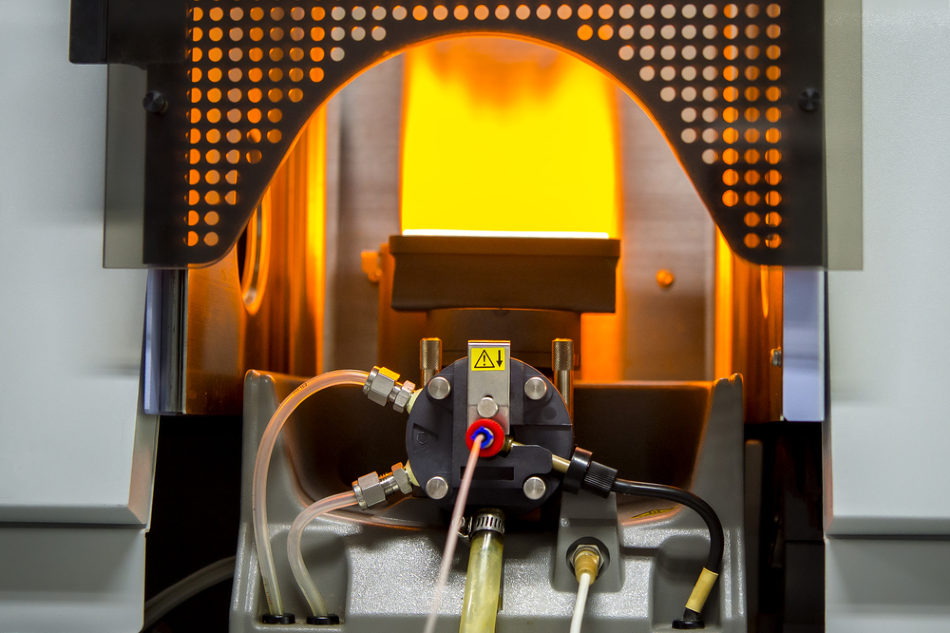
Image Credit: Rabbitmindphoto/Shutterstock.com
The ability to detect and analyze the chemical properties of a range of substances and molecules is a key area of scientific research that can increase our knowledge of the world and universe. One widely used set of techniques by researchers in many countries is the field of spectroscopy.
Spectroscopy – An Overview
As every student knows, light can be split into a rainbow by a prism. Spectroscopy works on this same basic principle by splitting electromagnetic radiation into its constituent wavelengths; a spectrum. However, a spectrum is more than just a ‘rainbow’. The spectrum produced is not smooth, but is punctuated by lines of emission or absorption. This is because of the energy levels of electrons in molecules and atoms being quantized and the emission of electromagnetic radiation occurring at specific wavelengths.
Traditionally, spectroscopy was carried out by the use of a prism and photographic plates, but today the technique is commonly carried out by using diffraction gratings that disperse the light, which is then dispersed onto CCDs (Charge Coupled Devices.) These CCDs are similar to the ones used in digital cameras. One-dimensional spectra that contain a large amount of data can then be extrapolated from the results.
Data gathered by spectroscopy include energy levels, redshift, internal velocity dispersion of complex objects, abundance of metals present in substances or targets (e.g. galaxies) and interstellar reddening (in astrophysics studies.) There are many different types of spectroscopy including Raman spectroscopy, atomic spectroscopy, infrared spectroscopy, and nuclear magnetic resonance.
Overall, spectroscopy is the study of the relationship between matter and electromagnetic radiation. It is used in many different areas of scientific research including biomedical research, the oil industry, and astronomy.
Applying Sensors to Spectroscopy
Traditionally, light sensors have been used in various ways in applications such as smartphones. The main types of sensors that have been used for many years are proximity sensors, ambient light sensors, gesture sensors, and color/RGB sensors. In recent years, there has been a focus on their use in spectroscopy to improve the technique and gather more accurate data and developing sensors based on spectroscopic techniques themselves is a cutting-edge field of scientific research.
Spectroscopy-Based Sensors: A New Type of Sensor
Scientific, industrial, and biomedical research has problems that require fast, sensitive, and powerful instruments, and spectroscopy-based sensors are showing promise in these areas.
One such type of sensor which has been developed over the last few years is based on Mid-IR (infrared resonance) spectroscopy. Mid-IR spectroscopy concentrates on the mid-IR spectral region, which is between 2 and 20 µm. This region is termed the “molecular-fingerprint” region because most molecules have intense fundamental vibrational bands in it. Compared to the near-IR telecom region, the detection sensitivity can be enhanced a thousand-fold as the strength of transmissions in this spectral band are of a similar magnitude.
Over the past decade, significant development of novel mid-IR coherent light sources has been made. These light sources utilize powerful mode-locked lasers and have been applied to frequency comb generators and microresonators. Lasers that can emit over a broad mid-IR spectral scan are still rare, but are under active development and being amplified by media such as quantum cascade semiconductors and rare-earth-doped fibers.
Novel opportunities for spectroscopy and the development of spectroscopy-based sensors are being opened up by these new light sources. Crossed dispersers and scanning Michelson-based Fourier transform interferometers can be improved by their use. Sensitivity to trace gases can be enhanced. Mid-IR cameras of low sensitivity can be facilitated. Coherent broadband light sources can also spur the development of new spectrometric techniques such as dual-comb spectroscopy, which traditionally faced challenges in the mid-IR region.
Other studies have been carried out into such applications as Raman-spectroscopy-based sensors for small-molecule liquid mixtures and mobile sensors for high-resolution NMR spectroscopy and imaging.
The development of spectroscopy-based sensors represents a recent leap forward in scientific analysis techniques and, as the technology develops and improves, is opening up new possibilities for a wide variety of research fields.
Sources and Further Reading
Disclaimer: The views expressed here are those of the author expressed in their private capacity and do not necessarily represent the views of AZoM.com Limited T/A AZoNetwork the owner and operator of this website. This disclaimer forms part of the Terms and conditions of use of this website.